Copernicus: The Astronomer & the City
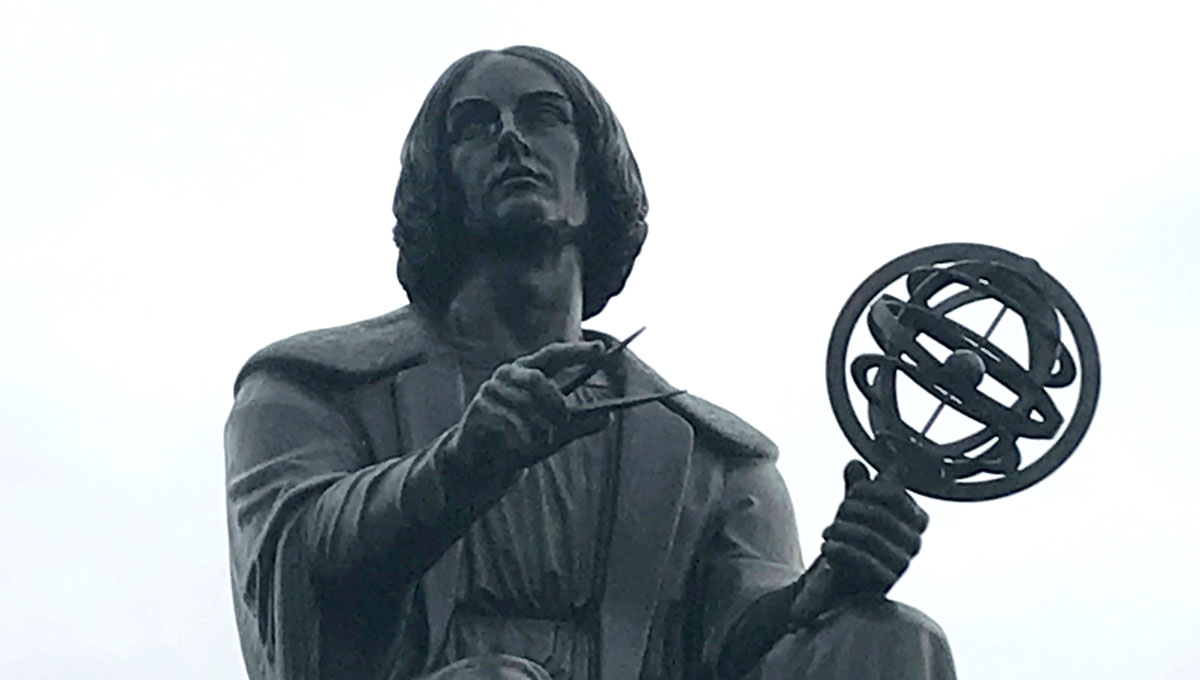
Who’s that guy sitting on a pedestal greeting you as you walk up to the Adler Planetarium? It’s one the most prominent astronomers in the history of modern science, Nicolaus Copernicus! In honor of his 545th birthday, let’s dive into the history behind this statue & this astronomer’s legacy.
When you approach the Adler Planetarium walking down Solidarity Drive, you are greeted by the bronze statue of a Polish astronomer sitting on a pedestal and gazing towards Chicago’s skyline. This astronomer is Nicolaus Copernicus (born on Feb. 19, 1473) who, shortly before his death in 1543, published one of the most important books in the history of science: De revolutionibus orbium coelestium (“On the Revolutions of the Celestial Spheres”). In this book, Copernicus suggested that the Earth orbits the Sun together with the other planets of the solar system. This idea was not totally new (others before Copernicus had already made similar suggestions), but taken literally, it contradicted the cosmology of Aristotle and the astronomical models of Ptolemy, still prevailing in the 16th-century. It was commonly accepted by then that the Earth stood still and all celestial bodies, including the Sun, revolved around it. After all, common sense, the authority of ancient authors, and the best information available by then all seemed to support this view.
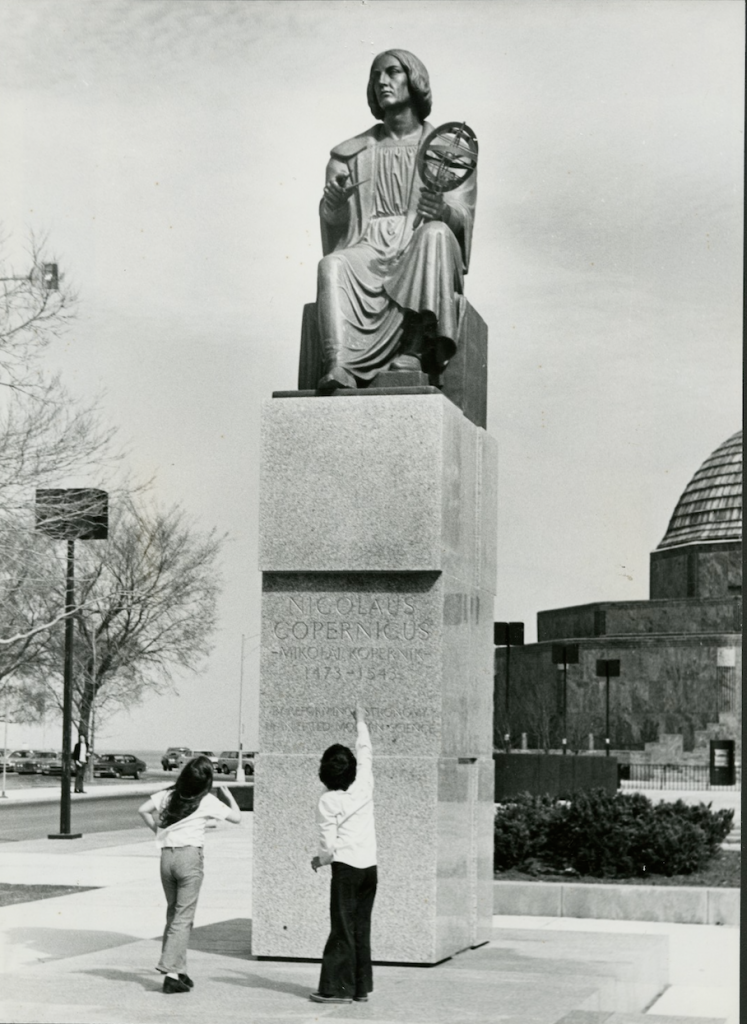
The Copernicus monument in front of the Adler Planetarium. Two young visitors seemingly ask a lofty Copernicus to borrow his armillary sphere… to no avail (date unknown, Adler Archives).
A little background on the man on the pedestal: Copernicus was a low-profile church official who seemingly approached the diffusion of ideas about a heliocentric (Sun-centered) universe with caution. And when it finally came out after much hesitation, De
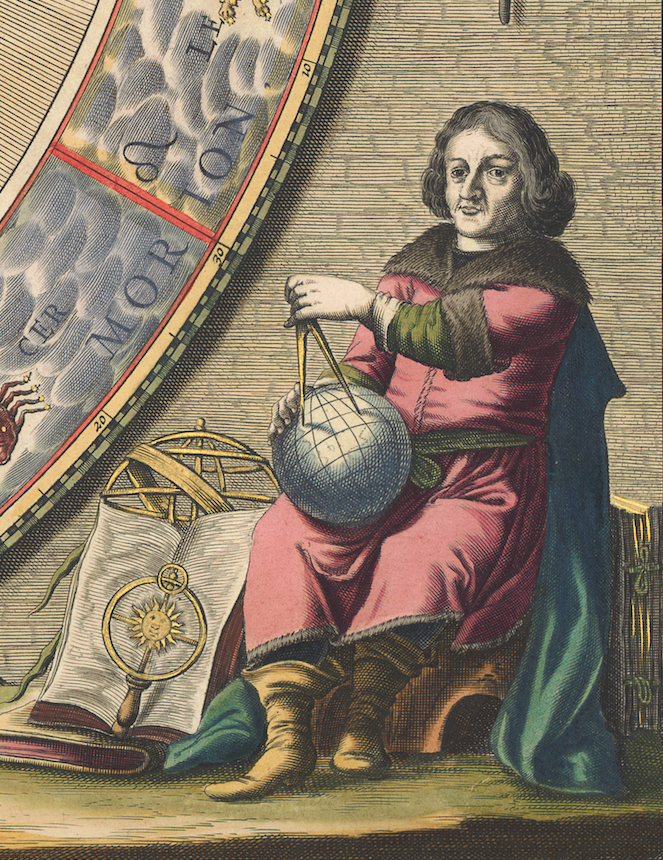
The statue of Copernicus that sits in front of the Adler Planetarium was erected in 1973 to celebrate the 500th anniversary of Copernicus’s birth. It is a replica of the Nicolaus Copernicus Monument located in Warsaw, Poland, at the Palace Staszic, which nowadays houses the Polish Academy of Sciences.
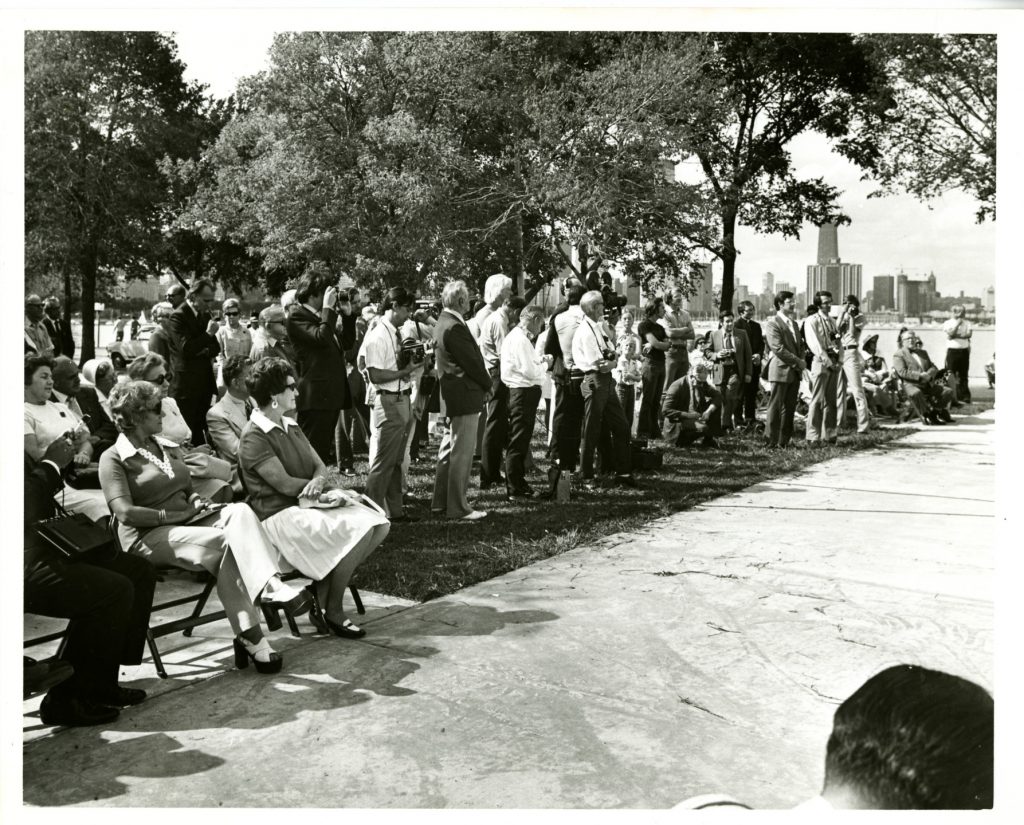
Dedication of the Copernicus monument in Chicago Museum Campus on October 14, 1973 (Adler archives).
The original statue in Warsaw was designed in 1822 and executed in 1830 by the Danish sculptor Bertel Thorvaldsen (1786–1844). Thorvaldsen maintained a large workshop in Rome, Italy. A champion of heroic monuments in the neo-classical style, he catered for a prominent clientele, which included the Pope, Napoleon, and several royal families across Europe.
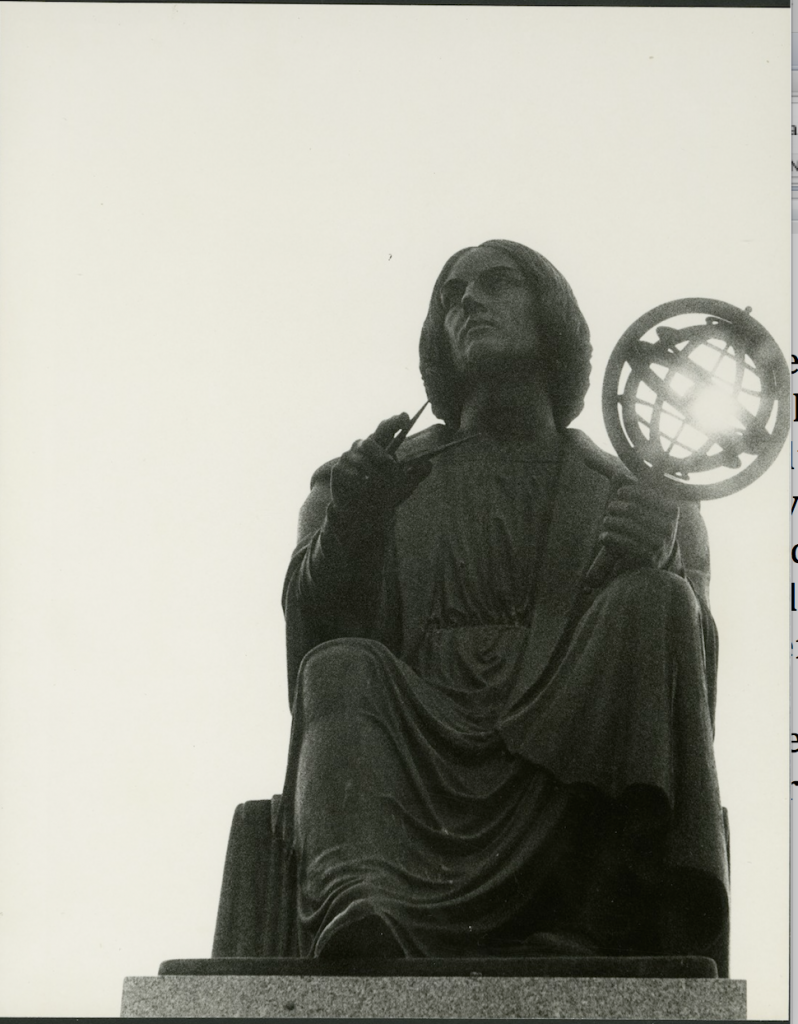
The Copernicus statue in front of the Adler wittingly photographed so that the Sun appears close to the center of his armillary sphere (a position normally occupied by the Earth, as is also the case in this particular armillary). Copernicus would have liked this one for sure (undated, Adler Archives).
Thorvaldsen’s Copernicus statue was damaged during World War II, but was eventually restored and rededicated in 1949. The replica that now sits in Chicago Museum Campus was cast from Thorvaldsen’s original plaster model by the Polish sculptor Bronislaw Koniuszy (1917-1986), a work for which the Copernicus Foundation of Chicago raised $150,000.
The statue not only celebrates Copernicus and his heliocentric system; it also serves as a symbol of pride for the large and important Polish community of Chicago – a city to which, contrasting with the astronomer’s discreet demeanor in life, the bronze Copernicus seems to keenly present his ideas as he holds a pair of dividers on one hand and an armillary sphere (a symbol of the old geocentric universe) on the other.
This year (and the date this post was published) marks what would have been Copernicus’s 545th birthday. The statue reminds us not only of Copernicus’s contribution to the rise of modern astronomy and cosmology but also that Chicago is a city made by diverse communities.






